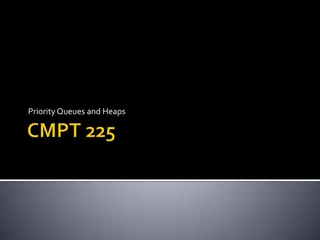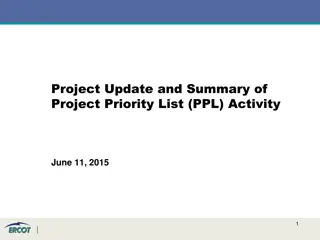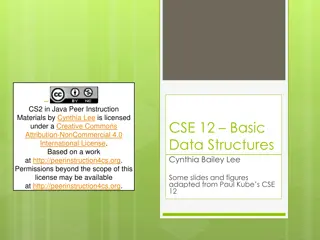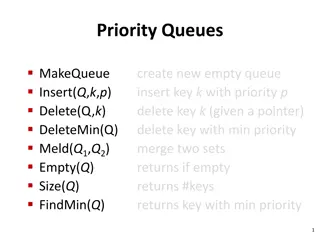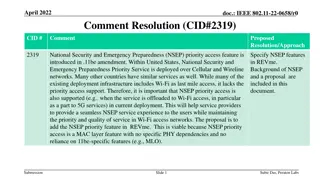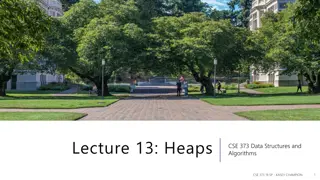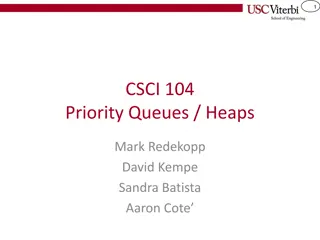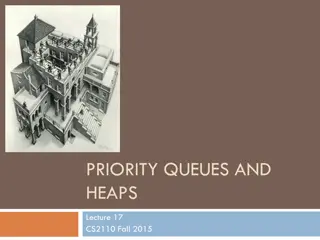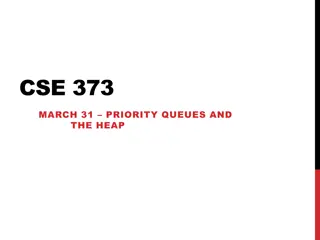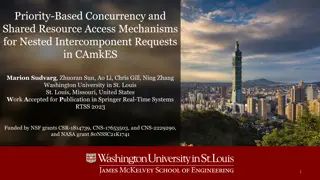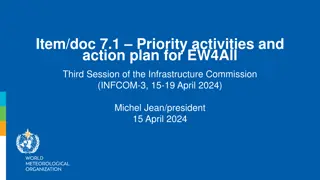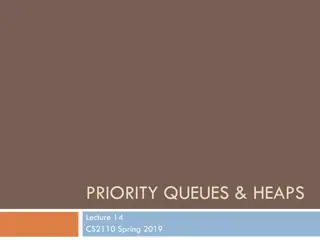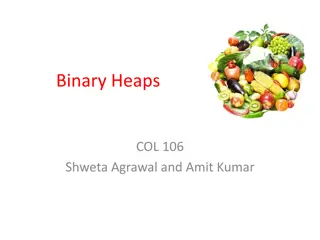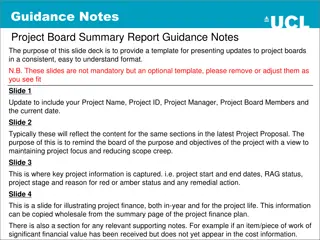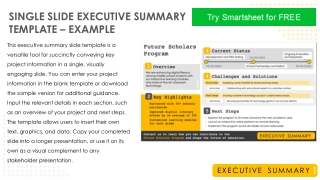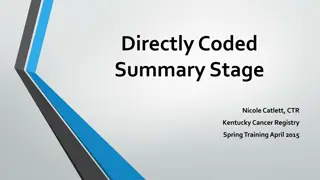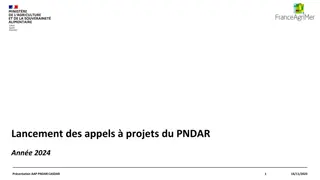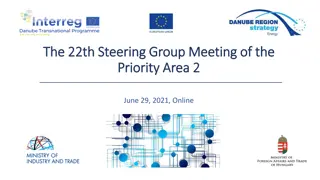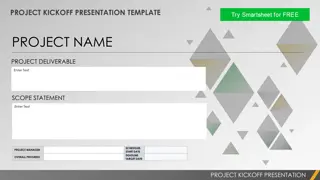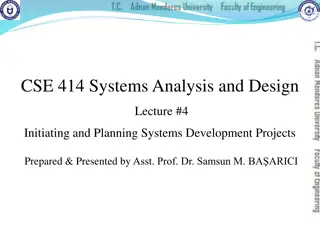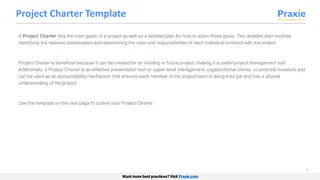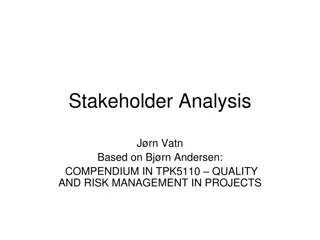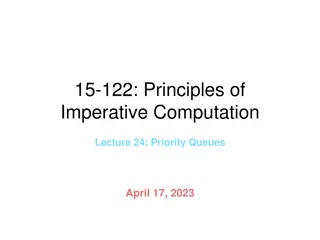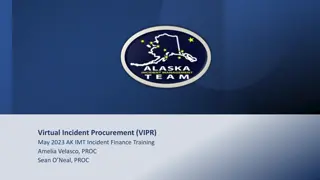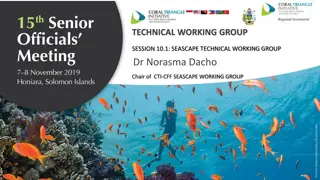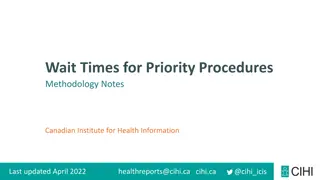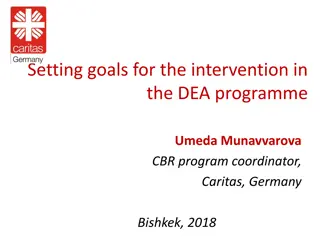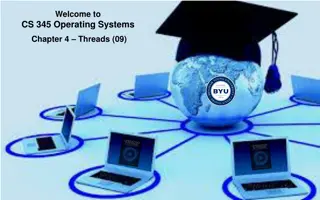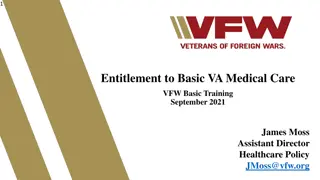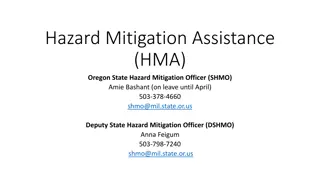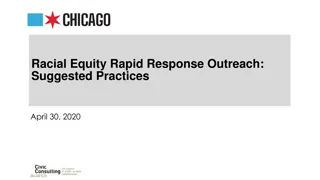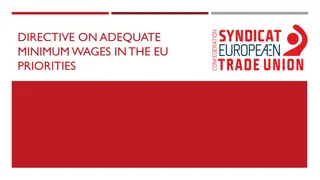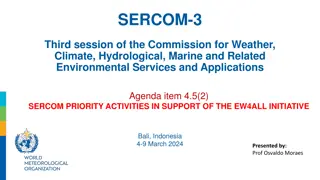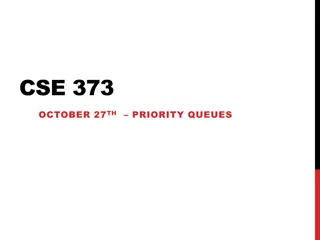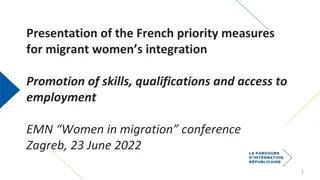COTEKINO Priority Project Summary
COTEKINO Priority Project involved developing and testing perturbation methodologies for convection-permitting ensembles across various operational weather services. Tasks included deriving perturbations, testing models, and coordinating with different agencies. The project aimed to enhance forecast accuracy by perturbing model parameters effectively. Key tasks involved communication, coordination with KENDA, testing SPPT and SKEB models, and exploring new perturbation strategies. The project also focused on soil/surface perturbations to study model sensitivity to different conditions.
- COTEKINO
- Priority Project
- Perturbation Methodologies
- Convection-Permitting Ensembles
- Weather Services
Uploaded on Sep 11, 2024 | 0 Views
Download Presentation

Please find below an Image/Link to download the presentation.
The content on the website is provided AS IS for your information and personal use only. It may not be sold, licensed, or shared on other websites without obtaining consent from the author. Download presentation by click this link. If you encounter any issues during the download, it is possible that the publisher has removed the file from their server.
E N D
Presentation Transcript
COTEKINO Priority Project COSMO WG7 Chiara Marsigli
COTEKINO PP PP duration: tentatively 2 years, 2013-2015 Aim: develop and test perturbation methodologies for the convection-permitting ensembles CP ens: DWD: operational MeteoSwiss and Italy: under development Russia: implemented for Sochi Olympics Poland: planned PP tasks: IC peturbations from KENDA (only coordination) Model perturbations: SPPT SKEB Coordination with DWD for new physics perturbation Soil/surface perturbations
Task 1. IC perturbations derived from KENDA 1.1 Communication about experiments and results. Exchange of dedicated tools. (0.55 FTEs) Chiara Marsigli (ARPA-SIMC), Andr Walser (MCH), Richard Keane (DWD) - 01.09.2013 - 31.08.2015 Deliverable : meetings between scientists working on this issue, in person at the GM and CUS and at least twice per year by web-conference (minutes). 1.2 Coordination with the KENDA PP (0.2 FTEs) Chiara Marsigli (ARPA-SIMC), Daniel Leuenberger (MCH) - 01.09.2013 - 31.08.2015 Deliverable: Participation to the KENDA meetings and email exchange. Documentation of techniques to derive IC perturbations from KENDA, and related tools.
Task 2. Model perturbations. 2.1 Test SPPT at 2.2/2.8 km (1.3 FTEs) 2.1.1 ARPA-SIMC/CNMCA: Analyse the impact w. r. t. perturbed parameters and deterministic verification of perturbed members. 2.1.2 MCH: Analyse the impact with respect to a non perturbed ensemble and further develop the scheme. 2.1.3 RHM: Overview the available methods for model perturbations. Test of SPPT in the Sochi 2.2 ensemble to assess the effect w.r.t the current method. Chiara Marsigli (ARPA-SIMC), Lucio Torrisi (CNMCA), Marco Arpagaus (MCH) and Daliah Maurer (MCH), Elena Astakhova and Dmitry Alferov (RHM) - 01.09.2013 - 31.03.2015 Deliverable: Definition of an optimal set-up of an advanced SPPT scheme for perturbing the COSMO model at 2.2/2.8km. 2.2 Test SKEB at 2.2 km (0.3 FTEs) Marco Arpagaus (MCH) Deliverable: Assessment of the performance. (report)
Task 2. Model perturbations. 2.3 Information about the development of a new model perturbation strategy at DWD (0.25 FTEs) Ekaterina Machulskaya and Richard Keane (DWD), 01.09.2013 - 31.08.2015 Deliverable: Good communication to COSMO and timely information, 2 meetings per year at DWD (one during CUS?)
Task 3. Soil/surface perturbations. 3.1 Study of COSMO model sensitivity to lower boundary initial conditions (0.7 FTEs) Nicola Loglisci and Riccardo Bonanno (ARPA Piemonte), Andrzej Mazur and Grzegorz Duniec (IMGW) 01.09.2013 - 31.01.2014 Deliverable: Sensitivity tests on the behaviour of different COSMO suites to different lower boundary initial conditions. (report) 3.2 Scientific analysis of the possible strategies to be followed: literature review, assessment of more suitable methods (0.3 FTEs) Nicola Loglisci and Riccardo Bonanno (ARPA Piemonte), Andrzej Mazur and Grzegorz Duniec (IMGW), Inna Rozinkina and Gdaly Rivin (RHM), 01.09.2013 - 31.03.2014 Deliverable: Definition of one or more techniques for lower boundary perturbations to be developed for COSMO. (report)
Task 3. Soil/surface perturbations. 3.3 Develop techniques for lower boundary perturbation (1.4 FTEs) 3.2.1 test of perturbation of soil model parameters (RHM) 3.2.2 selection and preparation of algorithms 3.2.3 setting a test-bed, implementation and testing 3.2.4 analyse the impact with respect to a non perturbed ensemble Nicola Loglisci and Riccardo Bonanno (ARPA Piemonte), Andrzej Mazur, Witold Interewicz and Grzegorz Duniec (IMGW), Inna Rozinkina and Gdaly Rivin (RHM), 28.03.2014 - 31.08.2015 Deliverable: The algorithm for lower boundary perturbation is implemented in one or more ensemble systems for testing.
FTEs FTEs are computed as time completely devoted to the project. 0.25 FTEs means that for 3 months the person has worked only for the Project (no holidays, no meetings, ) The COSMO year is from September to August Reporting (both status of the Project and FTEs) is 3- monthly (SON, DJF, MAM, JJA) For SON and MAM reporting is light (FTEs + 1 statement about the status of the project, problems encountered, need of SMC/STC, ) For DJF and JJA reporting is heavy (FTEs + (short) written report about the results)
Coordination Report to PP coordinator Meetings: web-conferences are asked by STC, possibly monthly, at least 3-monthly GM, CUS, other meetings possible (better on a specific Task), depending on the need (COSMO licence money) It is possible to use COSMO licence money to invite scientists or to visit a scientist within the Project scope Next meeting (virtual)


